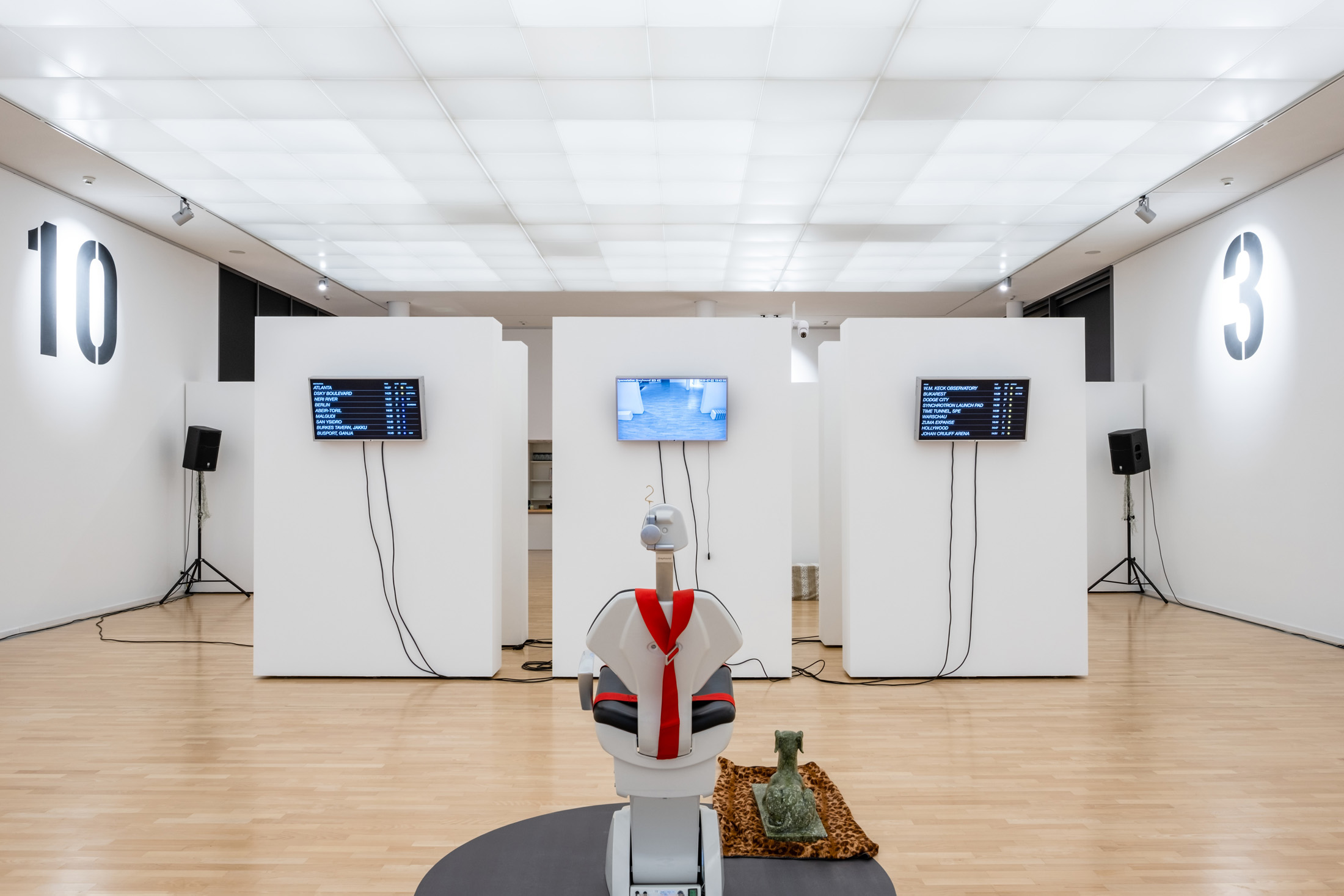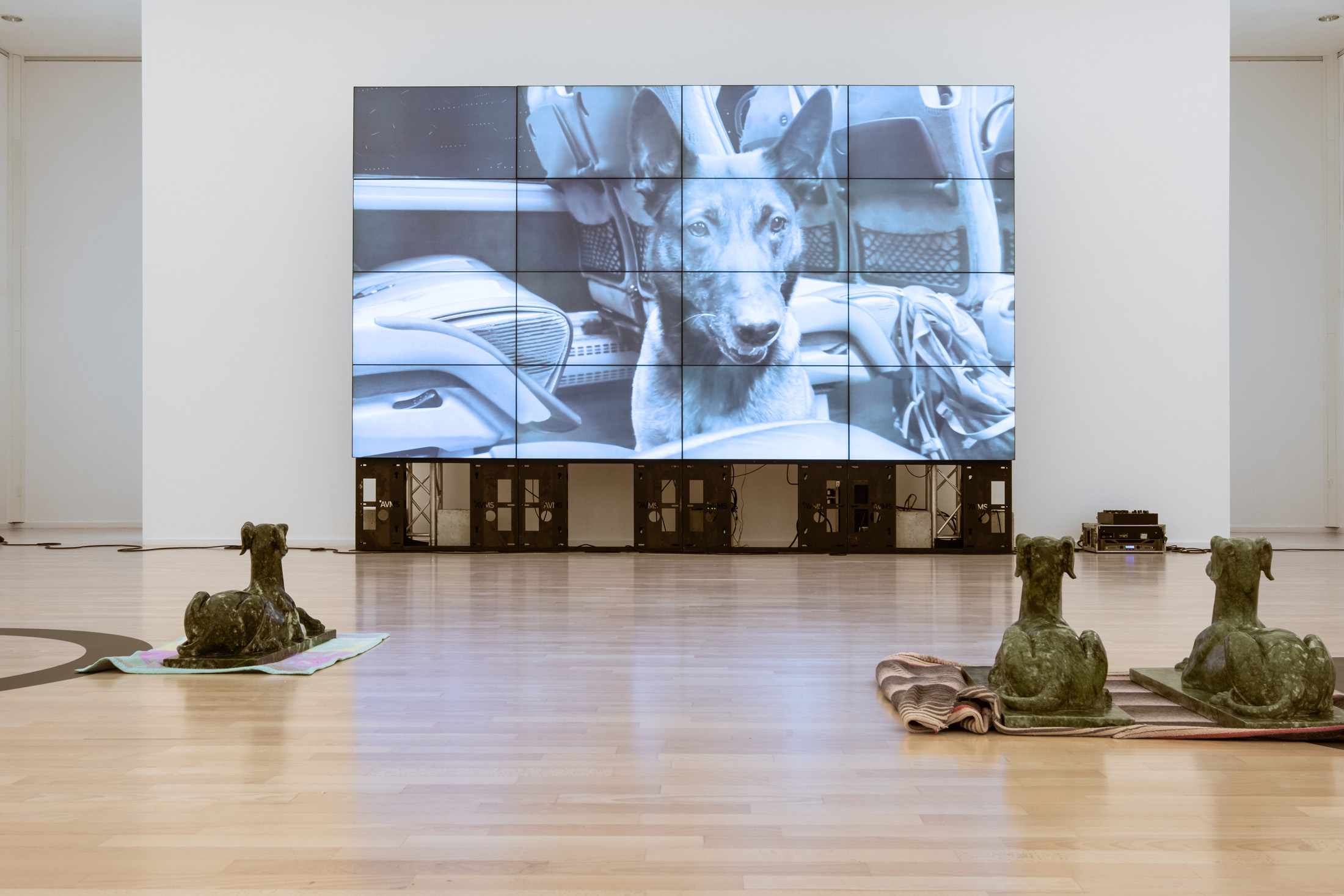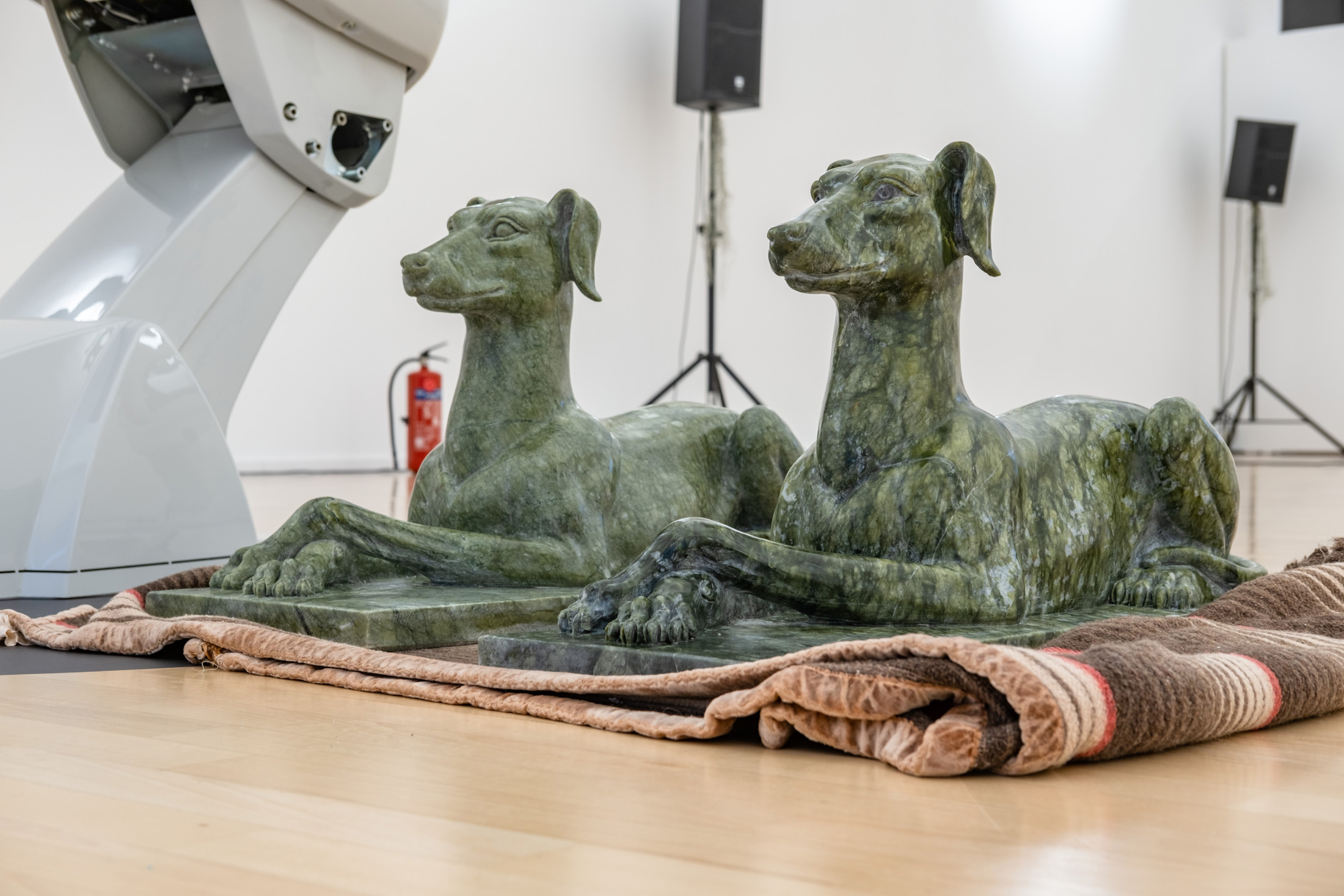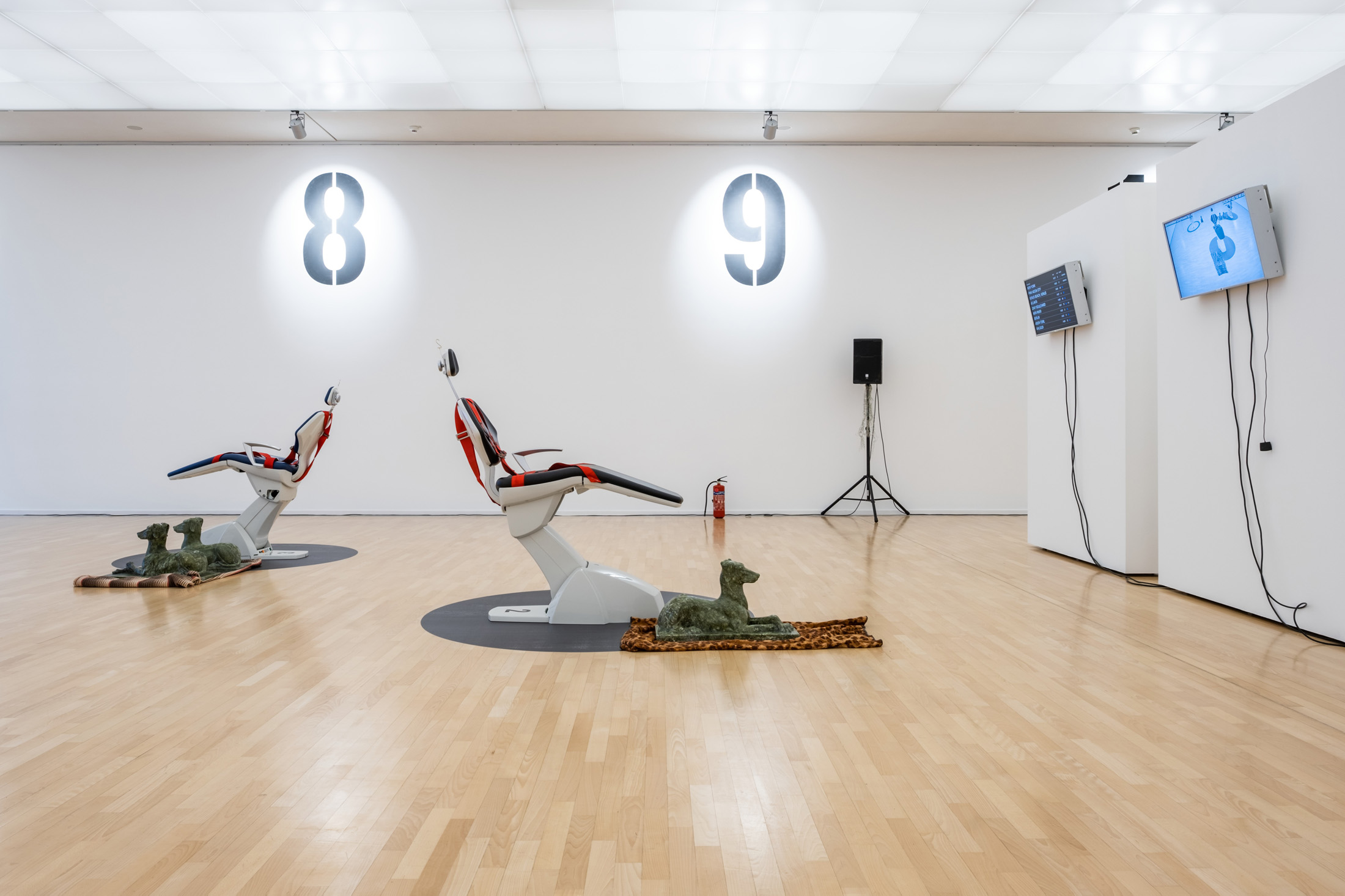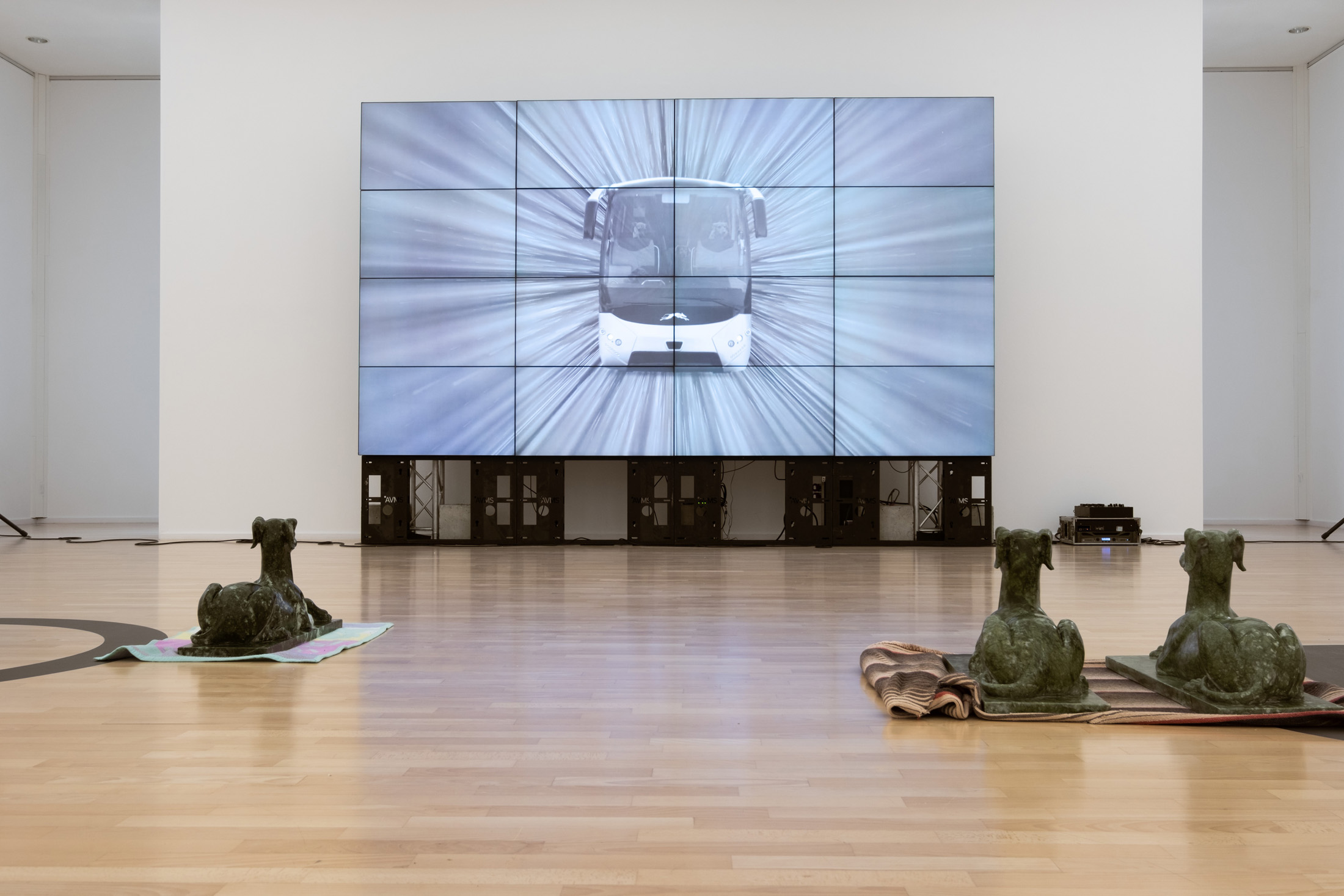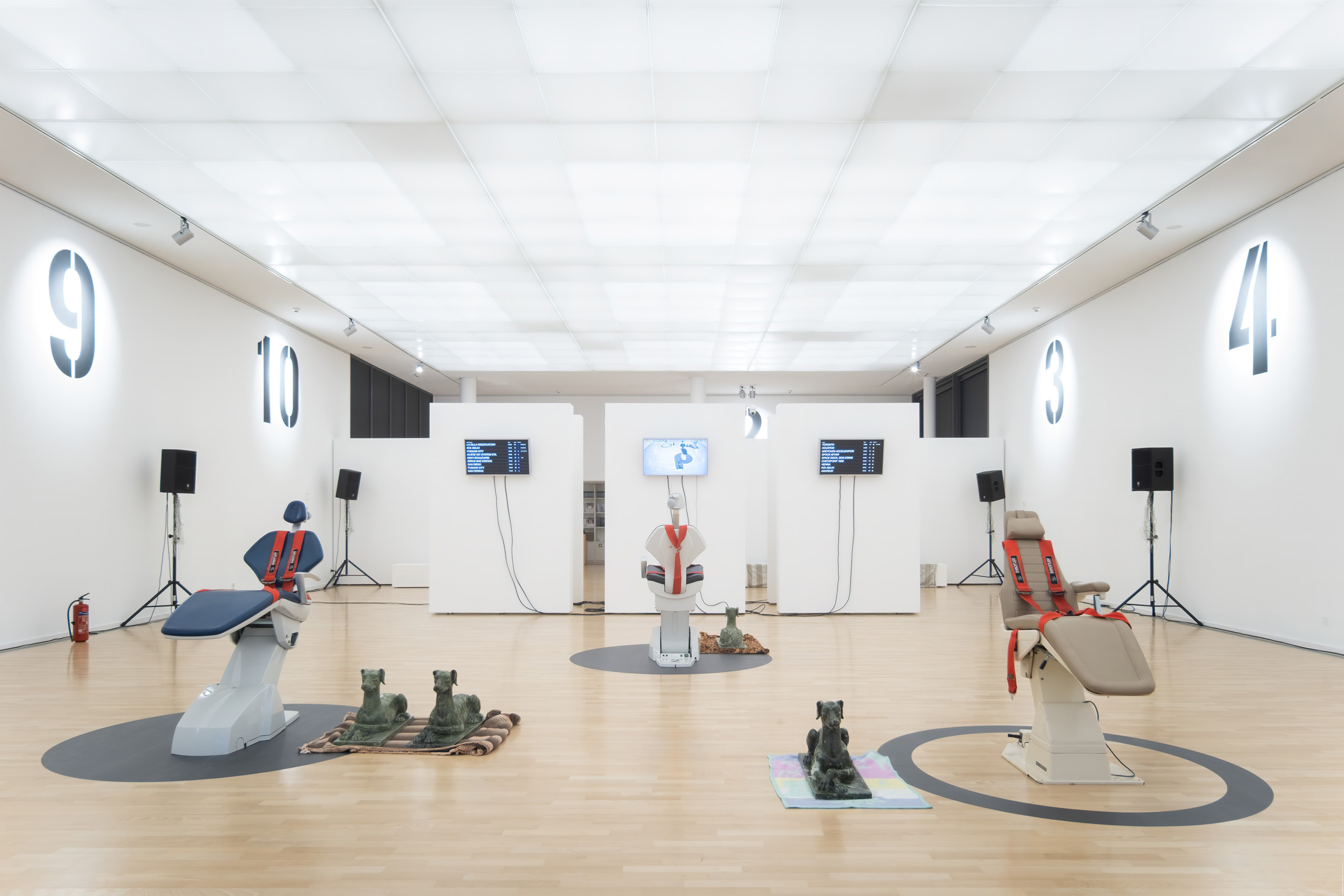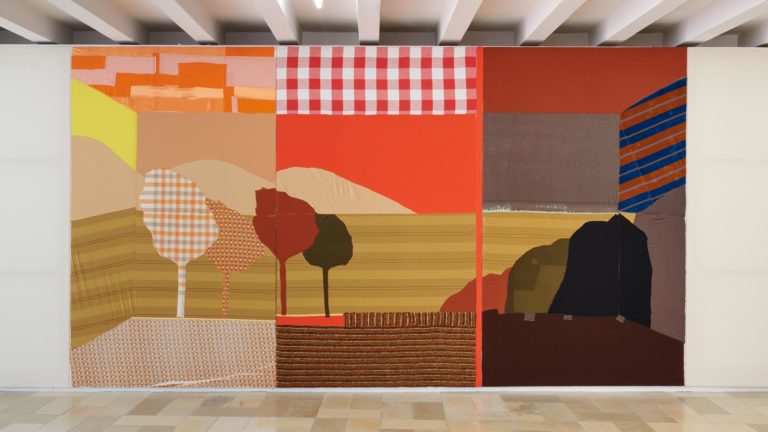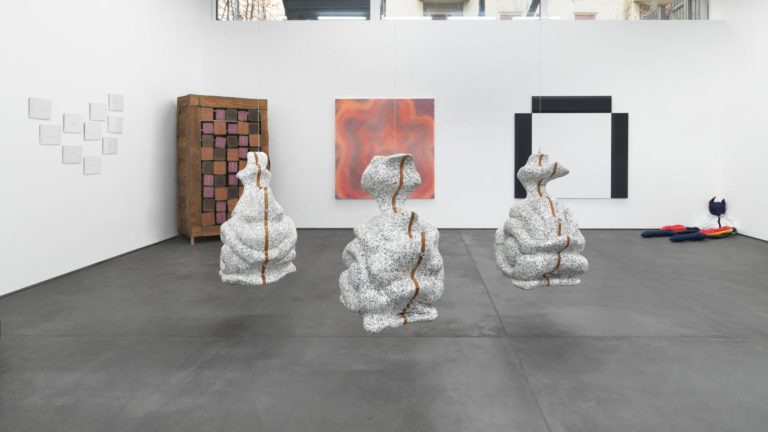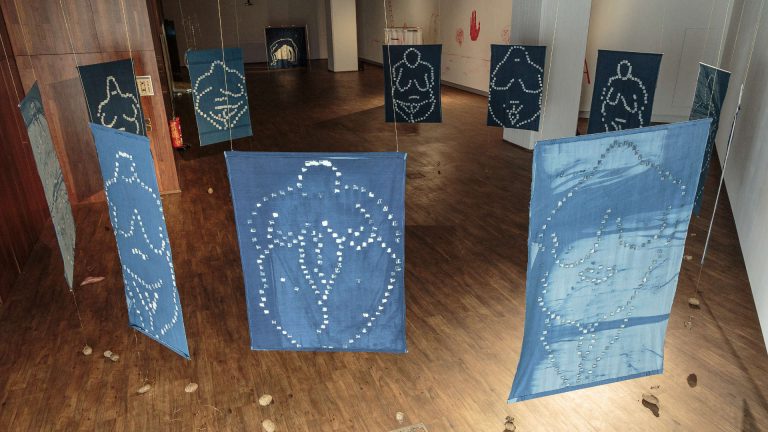Artist: Julia Scher
Exhibition title: Planet Greyhound
Curated by: Nadia Ismail
Venue: Kunsthalle Giessen, Gießen, Germany
Date: February 18 – May 1, 2022
Photography: all images copyright and courtesy of the artist, Kunsthalle Giessen, Drei, Cologne and Esther Schipper, Berlin
For her solo exhibition Planet Greyhound, the artist Julia Scher transforms the Kunsthalle Gießen into a cool, intergalactic transit area for humanoid and extraterrestrial life forms. The eponymous planet Greyhound – an exoplanet for which Julia Scher and the Kunsthalle have assumed sponsorship over a period of five years – becomes a place of cosmic longing. In the artist’s latest body of work, hopes for a new, more peaceful coexistence beyond mechanisms of control fuse together with a critical questioning of territorial claims to power.
The occupation of territories that cannot be assigned to any state or country, and which in particular include cosmic space, is increasing. Even if this occupation still holds a largely symbolic character, in that above all stars are gifted to lovers, the search for alternative living spaces is taking on a more serious undertone. Earth’s limited resources and the consequences of climate change make reachable planets seem more realistic as possible places of refuge, as recent missions to Mars aimed at water resources suggest. Space tourism for the super-rich is also gaining in popularity. Hence, the line between symbolic action and real aspiration is narrow.
Planet Greyhound, whose original name is Flam 7 CMa C, is situated in the Canis Major constellation. 64.4 light years from Earth, it is composed of gas and has no solid surface. Thus the exoplanet appears physically uninhabitable. Drawing on the reflections of astronomers and interweaving them with science fiction, Julia Scher develops a vision of a society for Greyhound in which humanoid and extraterrestrial life forms live together in a manner that is as peaceful as it is respectful. The first residents are Gabriele, Gretel, Gretchen, Gert and Greta. They are all dogs, specifically greyhounds.
Upon entering the Kunsthalle Gießen, visitors are greeted by Greta, a marble sculpture of a greyhound. The exhibition and planet’s namesake Greyhound originally refers to Greyhound Lines, the largest long-distance bus company in the US, which was recently taken over by Flixbus. Last winter their decommissioned buses were often converted into mobile stations for marginalised groups to keep warm. This act of humanity in conjunction with scenes of journeys filled with longing, which, in 1950s US films, more often than not begin in a Greyhound bus, form the conceptual basis for the exhibition.
The artist has developed a new body of work especially for Kunsthalle Gießen, which transforms the exhibition space into an intergalactic transit area. Much like a waiting hall, digital departure boards and large numbers point to boarding gates and invite you to travel around the world and to distant galaxies. The humorously fractured images and sounds of her audio-visual installation blend with the clean aura of the space. Yet the atmosphere of departure and temporary refuge in another, perhaps better world is tempered by a quiet undertone. The surveillance cameras dotted throughout the Kunsthalle reflect what is going on, sometimes visibly, sometimes not – particularly when a camera lens follows the movements of a visitor and appears to be registering their every move. Scher deliberately leaves the motivation for the observation open. A fragile atmosphere is created that constantly oscillates between security, surveillance and voyeurism. The artist thus continues her more than thirty years of intensive work with surveillance technologies. In her multimedia works, she uncovers associated dangers, explores the dynamics of social control in public space and reflects on collective behaviour and action. The exhibition space at the Kunsthalle oscillates between visions of eutopia and dystopia, subliminally touching on topics such as Elon Musk’s SpaceX projects – whose stated goal is to make Mars a permanent and autonomous colony for humanity – and the reports of UFO sightings recently published by the US Department of Defence.
With special thanks to Drei, Cologne and Esther Schipper, Berlin
Julia Scher, Planet Greyhound, 2022, exhibition view, Kunsthalle Giessen, photo: © Rolf K. Wegst
Julia Scher, Planet Greyhound, 2022, exhibition view, Kunsthalle Giessen, photo: © Rolf K. Wegst
Julia Scher, Planet Greyhound, 2022, exhibition view, Kunsthalle Giessen, photo: © Rolf K. Wegst
Julia Scher, Planet Greyhound, 2022, exhibition view, Kunsthalle Giessen, photo: © Rolf K. Wegst
Julia Scher, Planet Greyhound, 2022, exhibition view, Kunsthalle Giessen, photo: © Rolf K. Wegst
Julia Scher, Planet Greyhound, 2022, exhibition view, Kunsthalle Giessen, photo: © Rolf K. Wegst
Julia Scher, Planet Greyhound, 2022, exhibition view, Kunsthalle Giessen, photo: © Rolf K. Wegst
Julia Scher, Planet Greyhound, 2022, exhibition view, Kunsthalle Giessen, photo: © Rolf K. Wegst
Julia Scher, Planet Greyhound, 2022, exhibition view, Kunsthalle Giessen, photo: © Rolf K. Wegst
Julia Scher, Planet Greyhound, 2022, exhibition view, Kunsthalle Giessen, photo: © Rolf K. Wegst
Julia Scher, Planet Greyhound, 2022, exhibition view, Kunsthalle Giessen, photo: © Rolf K. Wegst
Julia Scher, Planet Greyhound, 2022, exhibition view, Kunsthalle Giessen, photo: © Rolf K. Wegst
Julia Scher, Planet Greyhound, 2022, exhibition view, Kunsthalle Giessen, photo: © Rolf K. Wegst
Julia Scher, Planet Greyhound, 2022, exhibition view, Kunsthalle Giessen, photo: © Rolf K. Wegst
Julia Scher, Planet Greyhound, 2022, exhibition view, Kunsthalle Giessen, photo: © Rolf K. Wegst
Julia Scher, Planet Greyhound, 2022, exhibition view, Kunsthalle Giessen, photo: © Rolf K. Wegst
Julia Scher, Planet Greyhound, 2022, exhibition view, Kunsthalle Giessen, photo: © Rolf K. Wegst
Julia Scher, Planet Greyhound, 2022, exhibition view, Kunsthalle Giessen, photo: © Rolf K. Wegst





